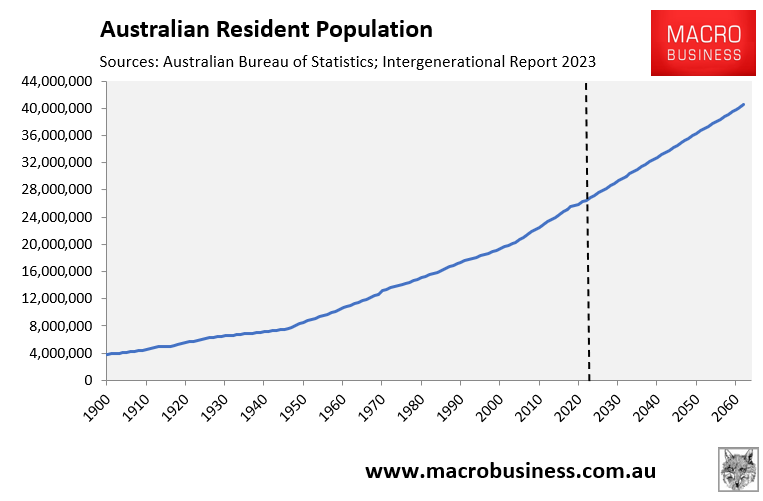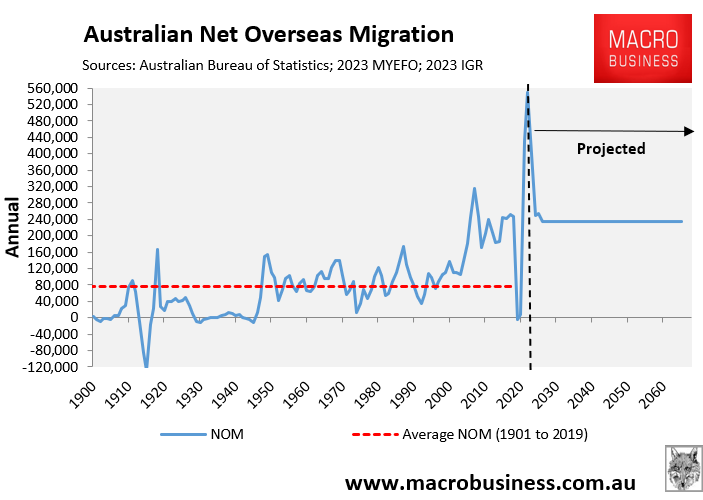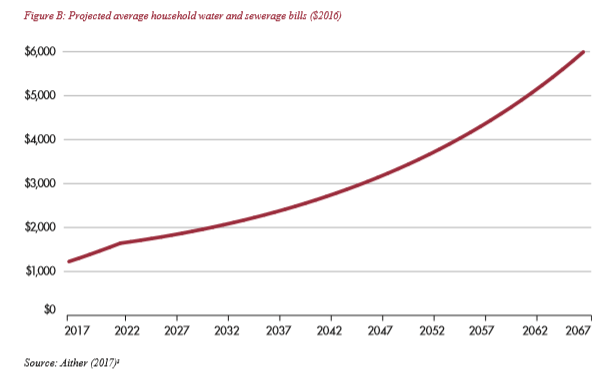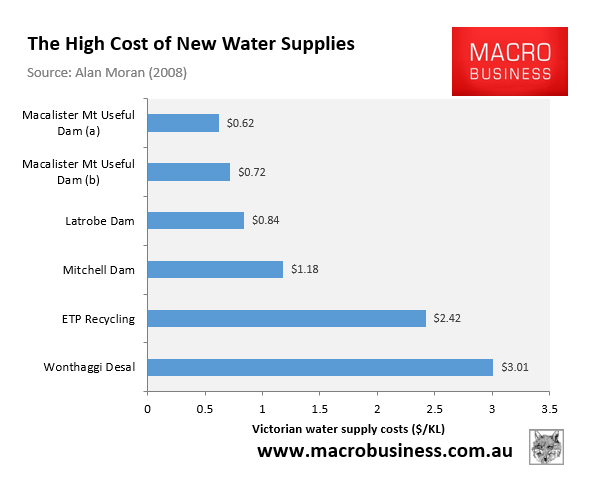The latest Intergenerational Report projects that Australia’s population will balloon to 40.5 million people by 2062-63, up from around 27 million people currently:

The quantity of population will be driven by permanently high net overseas migration, and will see the nation’s population balloon by a combined Sydney, Melbourne, and Brisbane over the coming 39 years:

The majority of this population expansion will occur along the East Coast, in Sydney, Melbourne, and Brisbane, and will strain existing water supplies.
For example, Warragamba Dam supplies almost 80% of Sydney’s drinking water. However, that was built in 1960, when Sydney’s population was just over 2 million people.
Sydney’s population is currently approaching 5.4 million, with a projected increase to over 9 million by 2060.
Anyone with even a sliver of common sense should recognise the issue here, especially because natural water sources are expected to become less reliable in the future due to climate change and higher evapotranspiration rates.
Australia is facing chronic water shortages amid ever-growing demand from population growth and projected lower rainfall.
The below graphic is from Statista, based on projections by the World Resources Institute (WRI), shows that Australia will experience “high” water stress by 2050:

The above doesn’t mean that Australia will run out of water. However, securing future supplies will require technological solutions and will become increasingly expensive.
Infrastructure Australia (IA) has released multiple reports warning of future water shortages and soaring costs.
In its 2017 Report entitled “Reforming Urban Water: A national pathway for change”, IA modelled that household water bills would increase by around four-fold in real terms as technological solutions like water desalination plants supplant traditional dam water as the main sources of urban water supply:

IA’s 2019 Infrastructure Audit warned that “climate change, population growth, ageing assets, and competing interests will ramp up pressure for limited resources”.
“Population growth is ramping up pressure on limited water supplies… Water planning on the basis of long-term population growth projections is problematic, with the growth of our major cities consistently underestimated”, IA noted.
A 2020 report from the Productivity Commission (PC) also warned that “major supply augmentations will be needed to meet increasing demand”.
“Scenarios developed for Melbourne, for example, include a worst case of demand outstripping supply by about 2028 without further supply augmentation”.
“Looking ahead, climate change and population growth present significant risks to the security of Australia’s water resources”, the PC warned.
So, I’ll ask the question once more: Given the predicted decrease in precipitation caused by climate change, as well as the long-term water scarcity that Australia will face, why is the federal government hell bent on running a mass immigration policy on the world’s driest continent?
Only five years ago, Australia faced a severe drought that left water supplies dangerously low.
What will happen the next time Australia experiences a catastrophic drought and must provide water and food to millions more people?
To handle the estimated 14 million additional people by 2063, Australia will need to build a slew of expensive, energy-intensive, and environmentally destructive water desalination plants.
Water desalination is substantially more expensive than traditional water sources, resulting in greater water bills, as demonstrated by IA above.

Furthermore, delivering desalinated water to inland locations such as Western Sydney is inherently difficult and expensive since water must be delivered uphill over long distances.
As a result, residential and business water prices would soar to fund the federal government’s mass immigration plan, which would disproportionately harm lower-income households.
Water is another example of how the federal government’s ‘Big Australia’ immigration program wrecks the environment and reduces Australian living standards.
Simply reducing net overseas migration to historical levels of fewer than 120,000 per year would better conserve the nation’s water supplies while lowering end-user costs.
The federal government’s ‘Big Australia’ mass immigration policy poses the greatest threat to Australia’s water supply.
Lowering immigration to reasonable and sustainable levels is, therefore, the first best solution.

